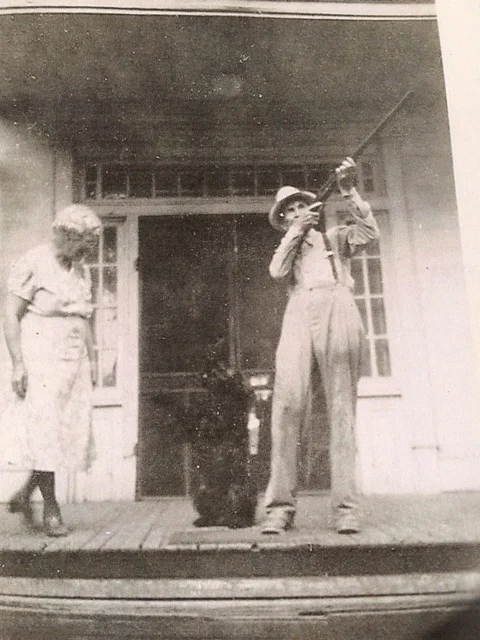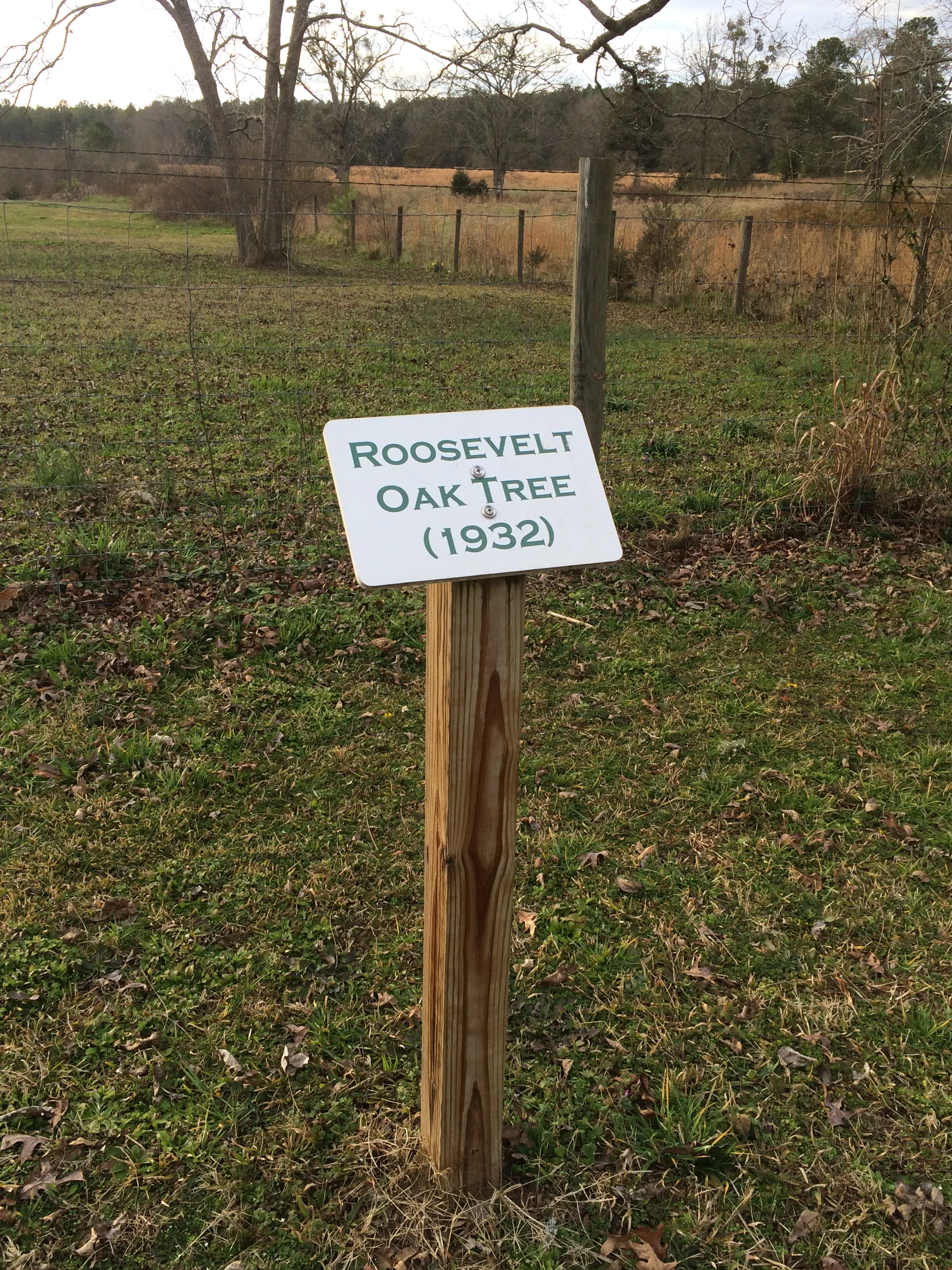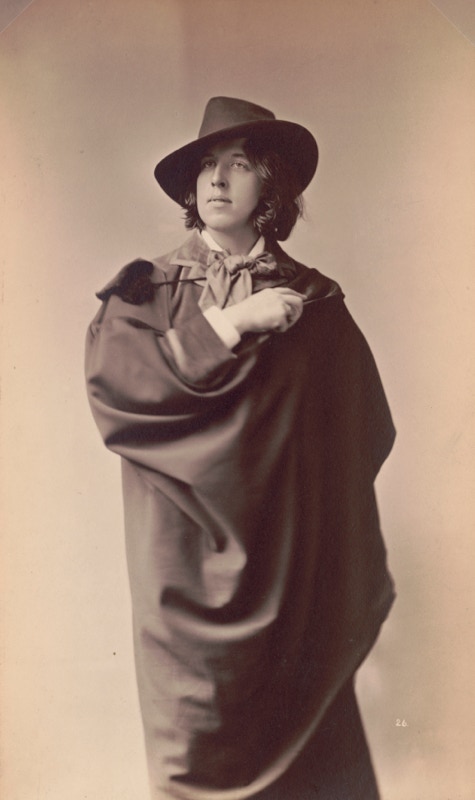
Construction Began in 1828
It all started in late 1827 when Jordan Barnes, born in Southampton County, Virginia in 1793, participated in Georgia’s Land Lottery. He had a “Fortunate Draw”, having his lottery “Ticket” drawn from a large drum called a “Wheel”. At the very same moment, the Ticket for the land that would become the Barnes Plantation was simultaneously drawn from another Wheel nearby. Land Lots were 202 1/2 acres in size. We understand the Barnes Plantation to have totaled 2,000 at its high point, Planter Barnes having purchased contiguous Land Lots we presume.
Jordan and his older brother, Gideon, had migrated together to Georgia from tidewater Virginia. For his part, Gideon had his own “Fortunate Draw” in an earlier lottery, securing property in what is now Lamar County, Georgia. He and Jordan established a tavern which served the newly developing area. What grew up around their tavern become known as “Barnesville” in their honor. Barnesville is the county seat of Lamar County, and lies 30 miles to the east of the Barnes Plantation.
The home is of 2 stories with 4 columns to support the roof over the front porch. It’s architectural style is of a “Plantation Plain” design, also known as “Antebellum Plain”. The original layout was that of a “2-over-2” design, meaning that each floor features 2 large rooms separated by a central hall. This is contrasted with the alternative “4-over-4” design of larger plantation homes of the period.
- Bill Lee
“When Jordan Barnes arrived here in 1828, there was no infrastructure beyond Native American Indian Paths. This was the ‘frontier’, and the new settlers had to fend for themselves as they sought to establish their homes, farms, and communities.”
FDR Was a Regular Visitor to The Barnes Plantation
Franklin Roosevelt discovered the therapeutic properties of the waters in nearby Warm Springs (just 5 miles down the road from Harmony Hall) when he first visited in 1924. FDR loved getting to know the back roads of Meriwether County Georgia, and he relished the freedom he enjoyed when at the wheel of his automobile, which had been modified with hand controls. Moreover, he loved getting to know the good people of the surrounding countryside. On one of his early exploration outings, he visited the Barnes Plantation and befriended Albert Jordan (A.J.) Barnes, the grandson of Jordan Barnes.
It is said that FDR would simply show up in his automobile, and blow the horn until people came out to see who had come to call. A favorite past-time was for FDR and A.J. Barnes to play checkers under the shade of a huge Oak tree on the roadside in front of the Barnes home. FDR, well-known for his love of trees and forestry, often commented on the beauty of this fine specimen of an oak tree.
In November, 1932 — when FDR had won election and was then President-Elect of the United States — A. J. Barnes presented the beloved Oak Tree to FDR as a gift, along with a circle of 10-feet all the way around the tree — which measured 23 feet in circumference. The gift had been properly recorded in the books and records of the Meriwether County Courthouse several days before its presentation.
According to the Roosevelt Warm Springs Foundation, Inc. (RWSF), the Barnes/FDR Oak Tree was added to its list of Meriwether County, Georgia land holdings, which included the Little White House and all of the other Roosevelt-owned acreage in the area. Present day Barnes Plantation-owner Bill Lee was able to hold the actual Property Deed - the one presented to FDR by A.J. Barnes, signed and property witnessed - in his (my) own hands during a recent meeting of the Meriwether Historical Society on the RWSF grounds. Special thanks go to Mr. Mike Shaddix, the long-time Archivist at RWSF, for making the effort to locate and share this meaningful document. Mike indicates that the “Barnes Tree” was maintained as an RWSF asset until at least into the early 1940’s, after which it is no longer listed among the Foundation’s Meriwether County land holdings. For its own sake, the tree in question was struck by lighting in 1970 and thus lost. Bill Lee has endeavored to place a marker along the road where the tree once stood, having used an old Barnes Family photo to determine the approximate location.
“For and in consideration of his interest in the preservation of the forests and trees of these United States, and in consideration of the services rendered to the citizens of the United States by the said grantee in his efforts to preserve and protect the forests and trees of the country, and in consideration of the high esteem and affection which the said grantor holds for the said grantee...”
Original Deed Given to FDR
This is the original deed presented to Franklin D. Roosevelt, then Governor of New York and President-Elect of the U.S., by A. J. Barnes, Sr. The document is now the property of the Roosevelt Warm Springs Foundation, which in October, 2019 was kind enough to produce it for the Barnes Plantation’s present-day owner Bill Lee’s - and other members of the Meriweather Historical Society’s - viewing.
“Roosevelt Oak” is shown at left, from a Barnes family member’s scrapbook
The tree was lost to a lightning strike in 1970. Current owner Bill Lee has erected a marker to indicate where the tree once stood (See photo below). The picture at left was obtained from a Barnes family member. The children are unidentified, but the period is believed to have been the 1930’s — the very middle years of FDR’s friendly visits to the Barnes Plantation.
OSCAR WILDE DROPPED BY…
An early famous visitor to the Barnes Plantation was the British Playwright and provocateur Oscar Wilde. He made an extended lecture tour of the United States during the entire year 1882. In July of that year, on his way from Columbus to Macon, Georgia, Wilde visited nearby White Sulfur Springs to seek relief from the Georgia July heat. Mary Barnes invited the eccentric Wilde to visit her family home whilst en-route eastward toward his next lecture in Macon.
—Historical Research, “Oscar Wilde in America”, & Barnes’ Family Lore
“I don’t want to go to heaven. None of my friends are there. ”







